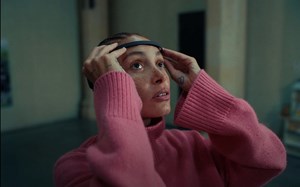
A new project by Art Fund shows the impact of art on human brainwaves and visualises the results in real-time and in 3D for the public, for the first time.
The technology was trialled by members of the public for the first time this week at the Courtauld Gallery in London. Those taking part viewed works in the gallery's stunning collection, including by Vincent Van Gogh, Claude Monet and Paul Cézanne, while connected to an electroencephalogram (EEG) monitor. The outputs of the brainwaves were visualised in real time on-screen in 3D. The technology is set to tour select museums across the UK in 2024.
The project was commissioned to illustrate the impact art can have on people's brains and emotions, and we hope this will help encourage people to visit more museums and galleries. New research commissioned to accompany the project found that whilst 95% of UK adults agree that visiting museums and galleries is beneficial, four in ten (40%) visit less than once a year, while around one in six (16%) believe that art has no impact on them at all.
However, the technology demonstrates both the clear and immediate impact art can have on the human brain, and how varied artworks may impact differently. For example, Van Gogh’s Self Portrait with a Bandaged Ear (1882) creates a clearly different pattern of brainwaves to Leon Kossoff’s Shell Building Site (1962) and Matthew Arnold Bracy Smith’s Lilies in a Jar (1914).
Dr Ahmad Beyh, a neuroscientist and postdoctoral fellow at Rutgers University, said: 'We know that when a person views something that they find beautiful, for example, a face or an abstract art painting, their brain’s pleasure centres light up and its visual sensory centre is engaged more intensely. Studies suggest that this is accompanied by a release of dopamine, which is also known as the feel-good neurotransmitter.'
The system for displaying the brainwaves has been created by special effects company The Mill, in collaboration with interactive artist Seph Li, interpreting electric signals coming from the brain to create three-dimensional real-time visualisations of the brainwaves of people who are viewing works of art in museums.
Will Macneil, Creative Director, The Mill, explains: 'When a user is more alert, the ribbons become wider, or when they are trying to make sense of something confusing the ribbons start to spiral and weave. When the viewer sees something they recognise, bright highlights appear.'
Art Fund Director, Jenny Waldman, said: 'At Art Fund we want to encourage everyone to share in great art and culture. By visualising the way engaging with amazing art and objects can truly impact us, we hope we will inspire more people to explore museums and galleries on their doorstep.'
Main Image :Adwoa Aboah wearing an EEG headset. (c) Pablo

ArtDependence Magazine is an international magazine covering all spheres of contemporary art, as well as modern and classical art.
ArtDependence features the latest art news, highlighting interviews with today’s most influential artists, galleries, curators, collectors, fair directors and individuals at the axis of the arts.
The magazine also covers series of articles and reviews on critical art events, new publications and other foremost happenings in the art world.
If you would like to submit events or editorial content to ArtDependence Magazine, please feel free to reach the magazine via the contact page.